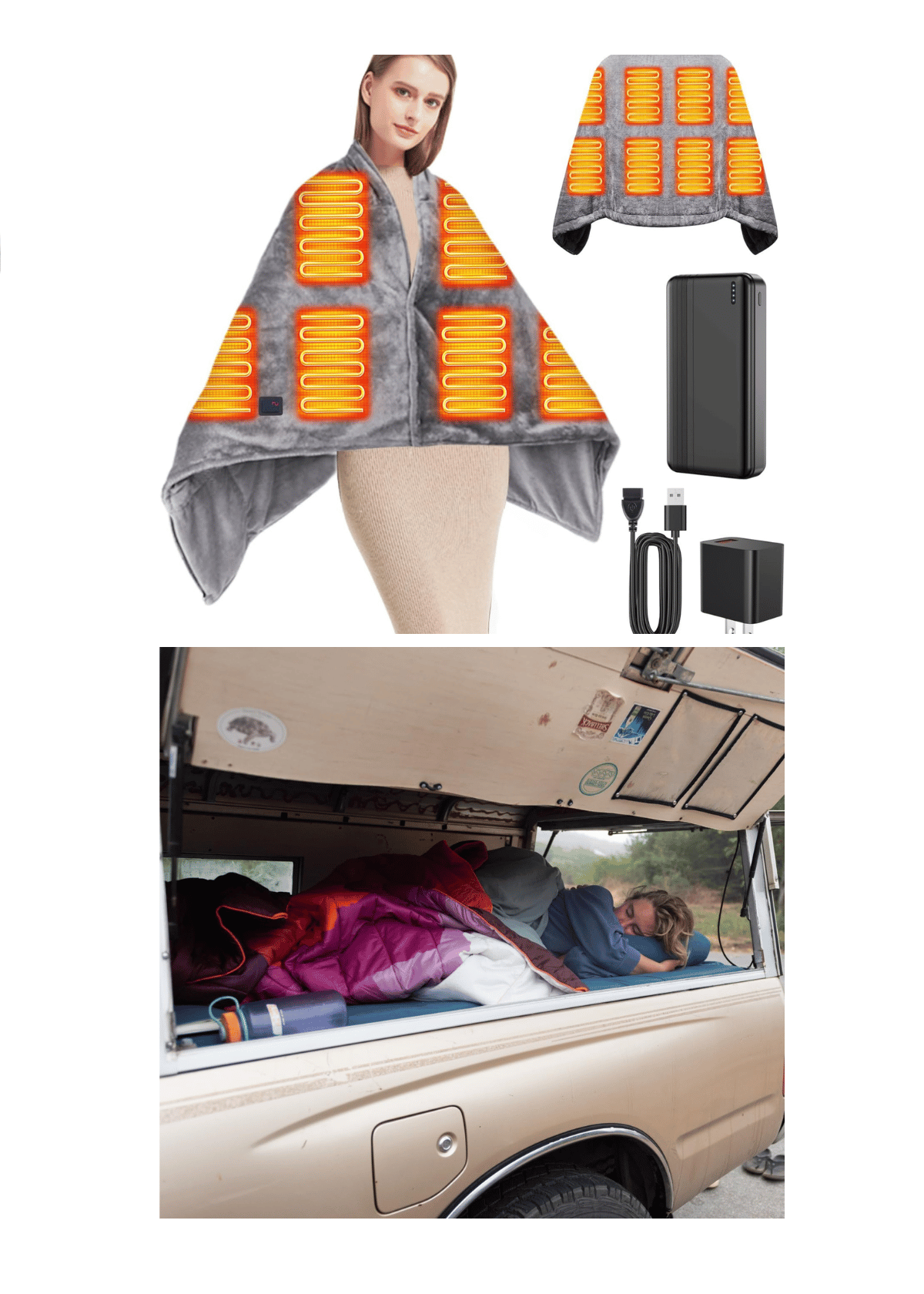Are you worried that washing your weighted blanket might ruin it? You’re not alone. Many people avoid cleaning their blankets out of fear they’ll damage the fabric or inner fill.
But keeping your weighted blanket clean is essential to its performance and sleep hygiene.
In this guide, I’ll show you how to wash a weighted blanket without ruining it—from choosing the right wash method to drying it properly—so it stays cozy, effective, and in tip-top shape for the long haul.

Preparing to Wash a Weighted Blanket
Before washing your weighted blanket, it’s essential to prepare it properly to ensure a safe and effective cleaning process. Here are some steps to follow:
- Check the Care Label: Always check the care label on your weighted blanket to see if it can be machine-washed or hand-washed. Some weighted blankets may require dry cleaning, so following the manufacturer’s instructions is crucial.
- Remove Any Loose Debris: Gently shake the weighted blanket to remove any loose debris, such as dust or dirt, that may have accumulated on the surface.
- Pre-Treat Any Stains: If there are any stains on the weighted blanket, pre-treat them with a stain remover or a mixture of gentle detergent and cold water. Could you apply the solution to the stain and let it sit for a few minutes before washing?
Use a Gentle Detergent: Choose a mild detergent for washing delicate items. Avoid fabric softeners or bleach, as they can damage the weighted blanket’s fabric or affect its weight distribution.
Weighted blankets are cozy at home, but for chilly campsites, electric camping blankets are the better choice.

Identify Stains and Pre-Treat Trouble Spots
Before anything else, please look over your weighted blanket for stains or spills. Tackling these areas before washing will make a big difference in the results.
- Spot clean noticeable stains using a mild detergent or a stain remover that’s safe for delicate fabrics.
- Use a soft-bristled brush or old toothbrush to gently work the solution into the fabric.
- Dab with a clean cloth—avoid rubbing, which can wear down the fabric.
Treat them with a gentle detergent mixed with cold or lukewarm water for food, drink, or oil-based stains, and let them sit for 5–10 minutes before cleaning. Always check the blanket’s care label to ensure you use a stain remover that won’t damage your material or filler.

Determine the Right Cleaning Method
Not all weighted blankets are made the same, so the best way to wash your weighted blanket depends on the material, construction, and type of filler, such as glass beads or plastic pellets.
Some are labeled machine washable, especially those made with durable cotton or microfiber fabrics, and can safely be cleaned in a washer. Others are hand wash-only, particularly when made with delicate materials or filled with heavier weights that require gentler care.
If you're handwashing a weighted blanket, you’ll appreciate the soft textures of yarn-picked baby blankets.
A few specialty blankets are spot-clean-only and shouldn’t be submerged in water. For food, drink, or oil-based stains, always pre-treat the area with a mild detergent and rinse using cold, lukewarm, or warm water.
Never use hot water, as it can set the stain. Always check your manufacturer’s care instructions before cleaning.

Machine Washing Your Weighted Blanket
If your blanket is machine washable, that’s great news—but you still need to take care.
- Use a large-capacity washer (top-load machines with agitators can be too harsh).
- Select a gentle or delicate cycle and cold water setting to prevent shrinking or fabric damage.
- Use a mild or gentle detergent—avoid fabric softeners and bleach, as they can break down the fibers and filler.
- Wash the blanket separately from other bedding to prevent strain on the machine or snagging. This is important because some models have removable covers that can be washed separately, and washing them together can cause damage.
Many weighted blankets recommend washing only the outer cover when possible, especially if it has a duvet cover.
While caring for your weighted blanket, you might also enjoy one of these quilted throw blankets for lounging on the couch.
Hand Washing Your Weighted Blanket
Hand washing your weighted blanket is best for heavier or non-machine-washable options. Start by filling a bathtub or large basin with cold or lukewarm water and mix in a gentle detergent to create a mild cleaning solution.
Submerge the blanket fully and gently agitate the fabric by hand to lift dirt and residue. After cleaning, rinse thoroughly to remove all detergent and press out excess water carefully—never wring, as it may damage the internal fill.
Lay the blanket flat on a clean surface or towel to air dry, flipping it occasionally. Laying it flat is essential to maintain its shape and prevent fabric distortion.

Drying and Post-Wash Maintenance
Drying a weighted blanket the wrong way can cause damage or clumping. Here’s how to do it right:
- Air dry the blanket on a flat surface, like a clean towel or rack, to avoid stretching.
- If machine drying is allowed, tumble dry on a low temperature or low setting.
- Avoid direct sunlight for long periods, which can weaken fibers or fade the material.
- Once dry, give the blanket a good shake to redistribute the fill evenly.
After washing your weighted blanket, pair it with one of these adjustable bed sheets for ultimate sleep comfort.

Spot Cleaning for Minor Messes
Spot cleaning is ideal when only a small area of your weighted blanket is dirty. Gently blot the stain using a soft cloth with cold water and mild detergent. Avoid rubbing, as it can spread the stain further into the fabric.
For stubborn stains, use an old toothbrush with light pressure. Rinse the area well, blot dry, and always let it air dry completely.
How Often to Wash a Weighted Blanket
The frequency of washing a weighted blanket depends on how often it is used. Here are some general guidelines:
- If Used Daily: Wash your weighted blanket every 2-3 weeks to maintain cleanliness and hygiene.
- If Used Occasionally: Wash your weighted blanket every 3-4 months to prevent dust and dirt buildup.
- If Used by Pets: Wash your weighted blanket more frequently, ideally every 1-2 weeks, to prevent the accumulation of pet dander and dirt.
It’s also important to note that washing a weighted blanket too frequently can affect its feel and durability. Therefore, it’s essential to balance keeping your weighted blanket clean and maintaining its quality. Complete your clean bed setup with our favorite hotel-inspired sheets.

Common Mistakes to Avoid
When washing weighted blankets, there are a few mistakes that can lead to damage:
- Using hot water or harsh detergents can degrade materials and fillers.
- Skipping the care label may result in irreversible damage.
- Overloading your washing machine with a heavy blanket can burn out the motor.
- Using bleach or fabric softeners can affect texture, smell, and longevity.
Play it safe by reading care instructions and sticking to cold water, gentle detergent, and low heat settings.
Want your own bedding to feel fluffier after washing? Discover why hotel comforters stay fluffy.
Tips for Keeping Your Weighted Blanket Cleaner Longer
Proper care doesn’t end after washing. Here’s how to keep your blanket fresher between cleanings:
- Wash your hands before handling it to reduce oil transfer.
- Avoid food or drinks near your blanket—especially in bed.
- Use a duvet or removable outer cover as a shield.
- Spot clean promptly to prevent deeper stains.
- Wash every 3–6 months or as needed, depending on use.
These tips will help you avoid frequent washes and keep your blanket in tip-top shape.

Hand Wash vs. Machine Wash – Which One’s Better?
Deciding between hand washing and machine washing depends on your blanket’s material, weight, and filler. Machine washing is quicker and works well for durable, machine-friendly fabrics, while hand washing is gentler, especially for delicate fabrics or blankets with plastic pellets.
Always follow the manufacturer’s care instructions and consider the blanket’s construction. Clean it based on usage to maintain its effectiveness and choose the best method for your blanket’s specific needs.
Understanding the materials and types of fillings used is crucial for most weighted blankets. To prolong the blanket's life and effectiveness, the frequency of cleaning should be based on usage.
After learning how to wash a weighted blanket, explore the best Utopia comforters for year-round snuggles.
🟢 Conclusion
Properly caring for your weighted blanket ensures it remains effective, clean, and cozy night after night.
Whether you prefer machine or hand washing, the key is cold or lukewarm water, gentle detergent, air drying, or low-tumble drying.
By following these easy tips and avoiding common mistakes, your blanket will continue to provide soothing comfort for years.
With attention and the right steps, you can keep your blanket fresh without sacrificing quality or durability.
🟡 FAQs
Can you wash a weighted blanket in the washing machine?
Yes—if the blanket is labeled machine washable. Use a large-capacity washer, cold water, and a gentle cycle with mild detergent. Avoid bleach and fabric softeners, and always follow the care label to prevent damaging the blanket’s material or fill.
What not to do with a weighted blanket?
Avoid using hot water, harsh detergents, or fabric softeners. Don’t overload the washing machine or ignore care instructions. Never wring the blanket dry or expose it to direct sunlight for long periods, as this can weaken the material and ruin the weighted filling.
Can a 130 lb person use a 20 lb weighted blanket?
A 20-lb blanket may feel too heavy for a 130-lb person. Experts recommend using a blanket about 10% of your body weight, plus or minus a pound or two. A 13–15 lb weighted blanket would be a more comfortable option.
How to wash a weighted blanket that was peed on?
First, spot-treat the stain with an enzyme-based cleaner or mild detergent. Then, wash the blanket using cold water on a gentle cycle or hand wash if necessary. Avoid heat when drying—air dry or tumble dry on low to prevent damage.



